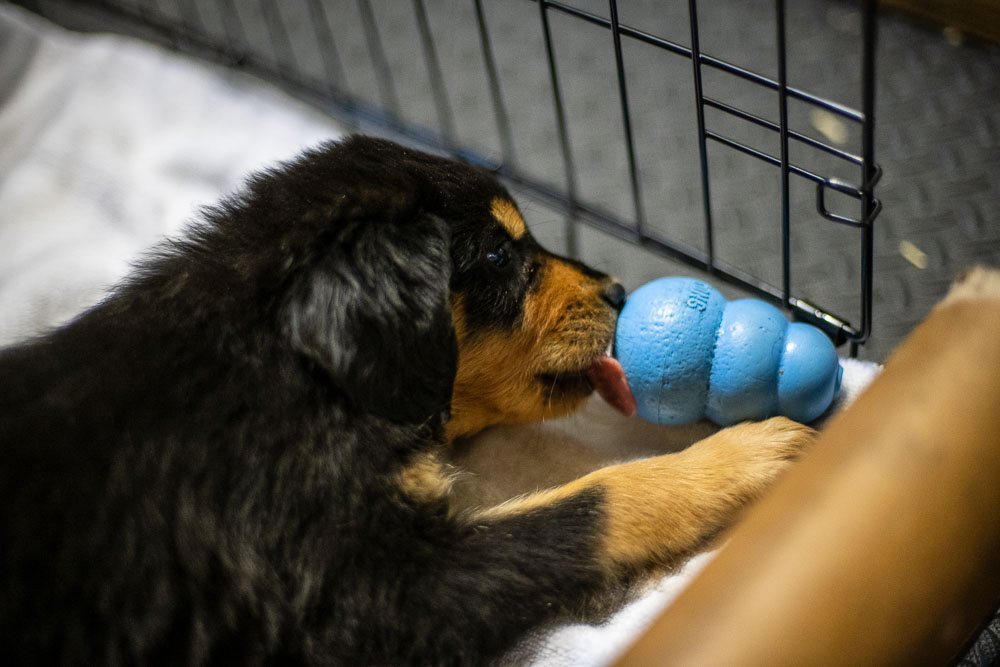Crate training is an essential skill for puppies to learn, as it provides a safe and secure space for them to retreat to when their owners are away or when they need to settle down. However, training a challenging puppy can be a daunting task, as they tend to be curious, easily distracted, and resistant to confinement. One proven method to successfully crate train such puppies is by employing a variable interval reinforcement schedule. This approach not only keeps the puppy engaged but also helps them develop a positive association with the crate. In this article, we will discuss the importance of crate training, the benefits of using a variable interval reinforcement schedule, and provide practical tips for effectively implementing this method.
Dog Situation
A 10-week-old English Shepherd puppy, named Max, is brought to his new home. His owner, Sarah, wants to crate train him for when she is not at home or when she needs him to settle down in a safe space. Max is a very active and curious puppy, which can make the crate training process a bit challenging. Sarah decides to use a variable interval schedule of reinforcement to train Max.
Dog Behaviors
Max is initially resistant to enter the crate and tends to whine, bark, and paw at the crate door when inside. He is easily distracted and often wants to play with his toys or explore his surroundings instead of focusing on the crate training.
Trainer Recommendations
How To Crate Train Your Dog or Puppy with Variable Interval Reinforcement
- Create a positive association
Create a positive association with the crate by making it comfortable and inviting. Place a soft blanket, some toys, and treats inside the crate.
- Use a variable interval schedule of reinforcement
Use a variable interval schedule of reinforcement, meaning that Sarah should reward Max at unpredictable intervals when he is calm and quiet inside the crate. This could be after 2 minutes, then 7 minutes, then 3 minutes, etc.
- Use a clicker or a marker word
Use a clicker or a marker word (e.g., “yes”) to mark the desired behavior (calm and quiet in the crate) before giving the reward. This helps Max understand which behavior is being rewarded.
- Gradually increase the time
Gradually increase the time Max spends in the crate, starting with a few minutes and building up to longer periods.
- Practice
Practice the crate training sessions multiple times a day, at various times.
- Ensure plenty of stimulation
Ensure that Max gets plenty of physical and mental stimulation outside of the crate, so he doesn’t develop pent-up energy or frustration.
Results/Consequences
By using a variable interval schedule of reinforcement, Max learns that being calm and quiet inside the crate is rewarding. The unpredictable nature of the rewards keeps him engaged and focused on the training. Over time, Max becomes more comfortable with the crate and starts to view it as a safe and secure space. Sarah’s consistency and patience help Max adjust to his new routine and environment, ultimately leading to successful crate training.

